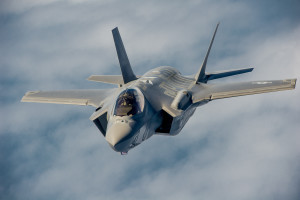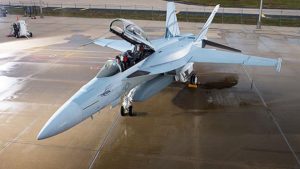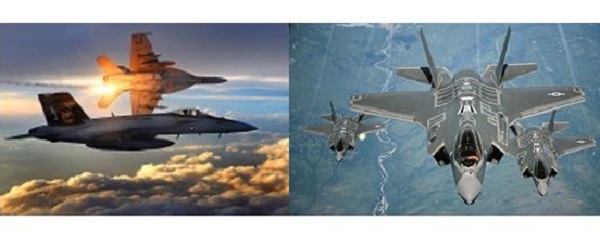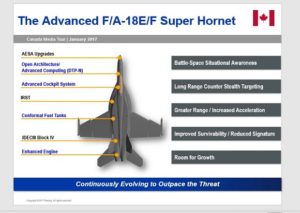Which is the better fighter aircraft Lockheed Martin’s F-35 Lighting II or Boeing’s F/A 18 Super Hornet? We may finally find the answer after United States Defence Secretary James Mattis ordered a review of the country’s F-35 Joint Strike Fighter program.
The review will compare the F-35C’s capabilities with that of the F/A 18 E/F as well as assess the viability of Boeing Advanced Super Hornet program.
“The Deputy Secretary of shall oversee a review of the F-35 program to determine opportunities to significantly reduce the cost of the F-35 program while meeting all requirements,” a three paragraph memorandum from Mattis last Thursday read. “In parallel the Deputy Secretary of Defence will oversee a review that compares the F-35C and F/a 18 E/F operational capabilities and assesses the extent F/A18 E/F improvements (an advanced Super Hornet) can be made in order to a competitive, cost effective fighter aircraft alternative.”
![]()
Related content
Liberals announce ‘interim purchase’ of 18 Boeing Super Hornets
F-35A declared ‘combat ready’ by USAF
Mattis wants the review to be launched immediately to provide recommendations for an upcoming budget decision.
Earlier this month, then the United States President-elect Donald Trump had said he wanted Boeing to “price out a comparable” Super Hornet to the F-35.

He has also tweeted that the F-35 program “…a disaster, it’s totally out of control.”
Lockheed’s F-35 is meant to replace older planes including Boeings F/A-18 and become the backbone of the Air Force, Marine Corps, and Navy’s fighter jet squadrons. More than 2,400 F-35s will be built for the U.S. and allied forces.
In the last 10 fiscal years, the F-35 program has had $81 billion in obligations, with the fiscal 2017 defense authorization allowing an additional $9.9 billion, according to the Seattle Times.
Costing $1.5 trillion, by some estimates, the JSF program is the biggest defence contract that U.S. defence contract the U.S. has signed. Yet, the program has been plagued by missed deadline, cost overruns and design defects.
The review ordered by Mattis could boost Boeing’s push for its Super Hornet and provide the company a chance to prove Advanced Super Hornet concept, its proposal for an improved Super Hornet aircraft.
In November last year, the Liberals moved to address the Canadian Armed Forces’ fighter jet “capability gap” by announcing that it will buy 18 F/A18 Super Hornet jets from aerospace company Boeing. The Liberals called the acquisition an “interim purchase.”
A full-on replacement of the Royal Canadian Air Forces aging fleet of CF-18 fighter jets will still be launched sometime before the end of Prime Minister Justin Trudeau’s term.

Supporters of the F-35 maintain that the Lockheed aircraft is a more modern aircraft than the Super Hornet and that the Boeing fighter design will be at least 25-years-old by 2021.
The first Super Hornet flew in 1995 and the first operational F/A-18E/F Super Hornet squadron was formed in June 2001.
Boeing delivered its first Block II iteration of the Super Hornet in 2005. The aircraft incorporates an improved active electronically scanned array (AESA) radar, larger displays, the joint helmet mounted cueing system, and several other avionics replacements.
The current U.S. Navy Super Hornet Program of record is 568 aircraft.
Dan Gillian, vice-president of Boeing’s F/A-18 and EA-18G programs, said Boeing is working with the U.S. Navy to extend the life of the service’s Super Hornets
Flight tests of the Advanced Super Hornet began in August 2013.
Here are some of the new technologies that will be featured in the Advanced Super Hornet:


